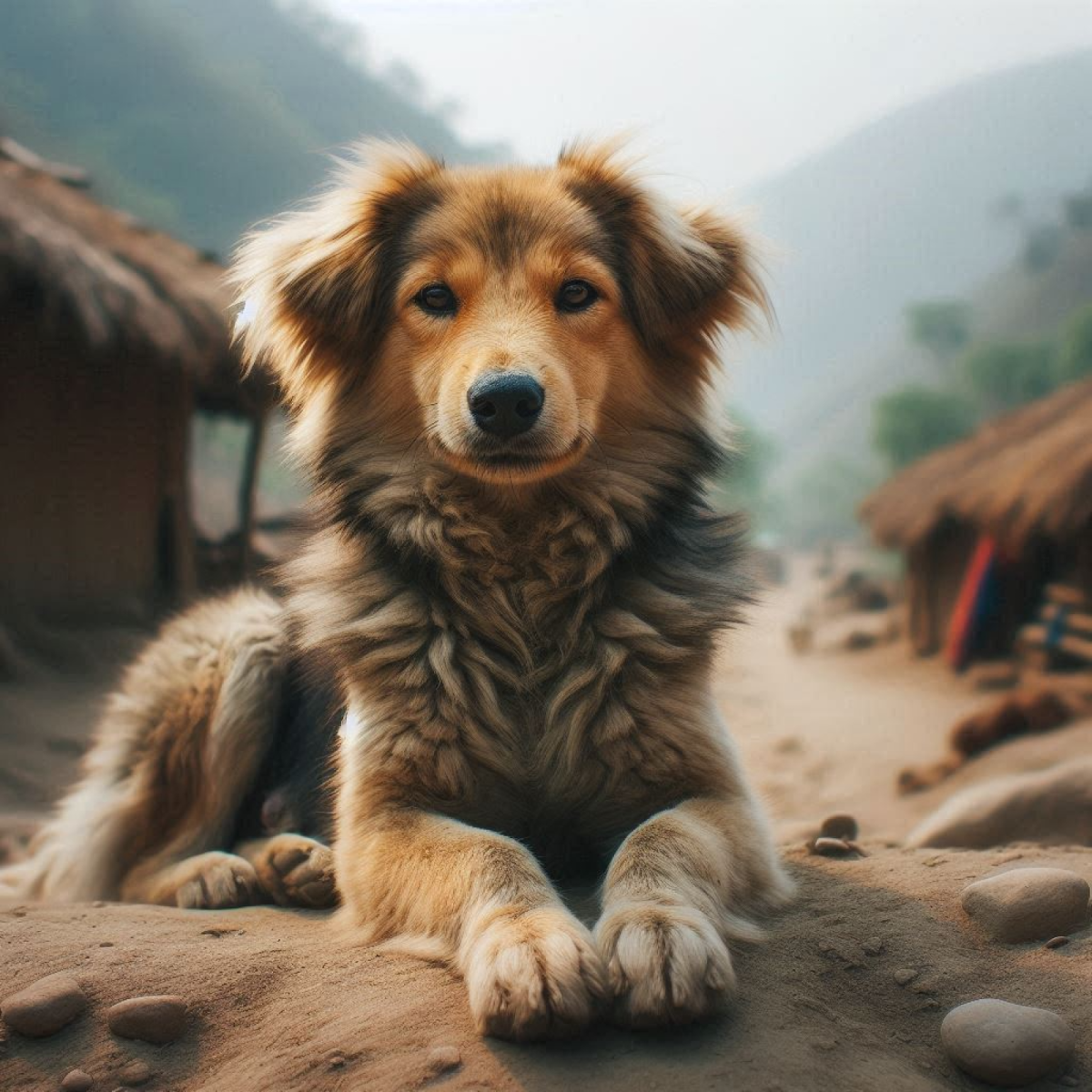The Bakerwali dog, also known as the Bakharwal dog, is a rare and ancient breed native to the Himalayan region of India, particularly in the states of Jammu and Kashmir. This breed has been an integral part of the nomadic Gujjar and Bakerwal communities for centuries, serving as a loyal guardian of livestock and protector of settlements. However, the Bakerwali dog is now facing the threat of extinction due to various factors.
Historical Significance
The Bakerwali dog has a rich history, deeply intertwined with the nomadic lifestyle of the Gujjar and Bakerwal tribes. These dogs were bred for their strength, endurance, and protective instincts, making them ideal for guarding livestock against predators such as wolves, bears, and even tigers. Their loyalty and courage have made them invaluable companions to these communities.
Current Status
According to a survey conducted by the Tribal Research and Cultural Foundation (TRCF), the population of Bakerwali dogs has drastically declined over the past few decades. The survey reveals that only a few hundred of these dogs remain, surviving in harsh and inhospitable conditions. The decline in their numbers is attributed to several factors, including disease, lack of effective vaccination, and the impact of insurgency in the region1.
Challenges and Threats
Disease and Lack of Vaccination: Many Bakerwali dogs succumb to diseases such as rabies and throat infections due to the lack of effective vaccination in remote and hilly areas. The absence of proper veterinary care exacerbates the situation, leading to high mortality rates among these dogs.
Insurgency and Conflict: The insurgency in Jammu and Kashmir during the 1990s led to the killing of hundreds of Bakerwali dogs. The conflict not only affected the human population but also took a toll on the canine companions of the nomadic tribes.
Low Reproductive Rate: Unlike other dog breeds that can give birth to multiple pups twice a year, the Bakerwali dog has a low reproductive rate. The females give birth to only one litter per year, with an average of three pups. This slow reproduction rate makes it difficult for the population to recover quickly.
Changing Lifestyles: The gradual shift of the Gujjar and Bakerwal communities from a nomadic to a more settled lifestyle has also contributed to the decline of the Bakerwali dog. As these communities settle in warmer areas, the need for livestock guardian dogs diminishes, leading to a decrease in the breeding and preservation of the breed.
Conservation Efforts
Efforts to conserve the Bakerwali dog are underway, with organizations like the TRCF advocating for the inclusion of the breed in the list of protected species in India. Conservationists emphasize the importance of preserving this unique breed, not only for its historical and cultural significance but also for its role in maintaining the ecological balance in the region.
Conclusion
The Bakerwali dog is a symbol of the rich cultural heritage of the Gujjar and Bakerwal communities. Its decline is a matter of concern, and concerted efforts are needed to ensure its survival. By addressing the challenges of disease, conflict, and changing lifestyles, and by promoting conservation initiatives, there is hope that this noble breed can be saved from extinction.



The article on the plight of the Bakerwali dogs of India is both enlightening and heart-wrenching. It's incredible to learn about the historical significance of these loyal guardians, who have been integral to the nomadic Gujjar and Bakerwal communities for centuries.
However, the challenges they face today, from disease and lack of vaccination to the impact of insurgency and changing lifestyles, are truly alarming. The efforts to conserve this unique breed are commendable, and it's crucial that we support initiatives to protect and preserve the Bakerwali dogs. Their survival is not just about saving a breed, but also about preserving a vital part of cultural heritage and ecological balance.
Let's hope that with increased awareness and concerted efforts, the Bakerwali dogs can thrive once again.
M
The Bakerwali dog's survival is threatened by disease, low reproduction, and lifestyle changes. Conservation is vital for this loyal breed. Explore options like Bravecto Without Vet Prescription to combat diseases and aid preservation efforts. Protecting this unique heritage ensures ecological balance and honors its cultural significance.